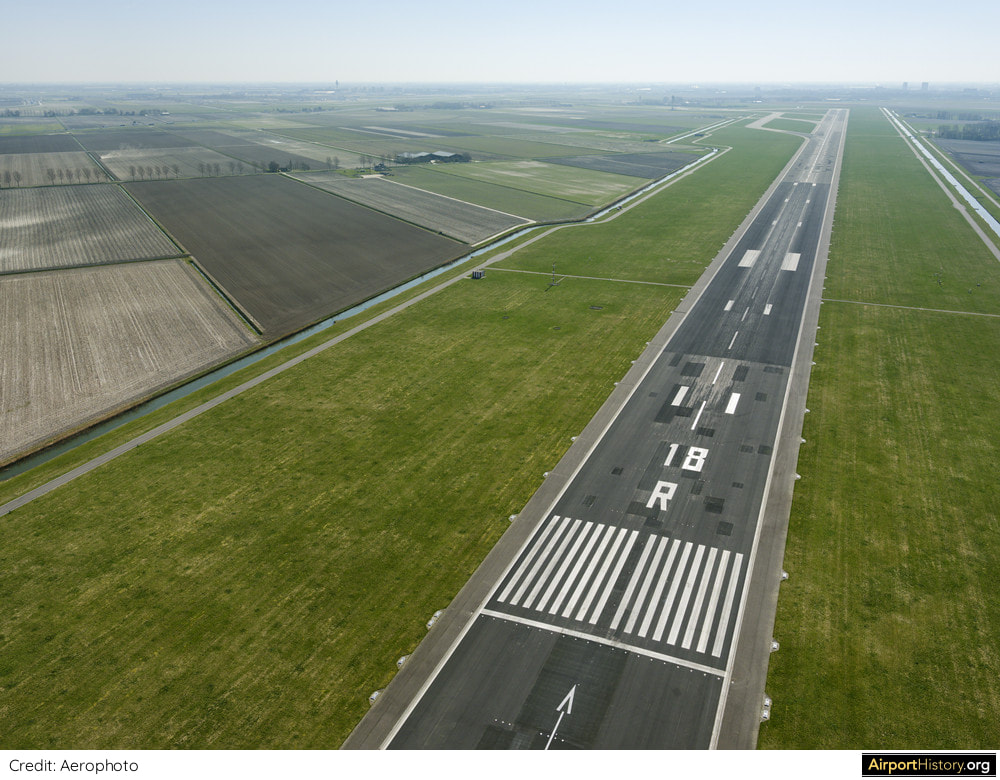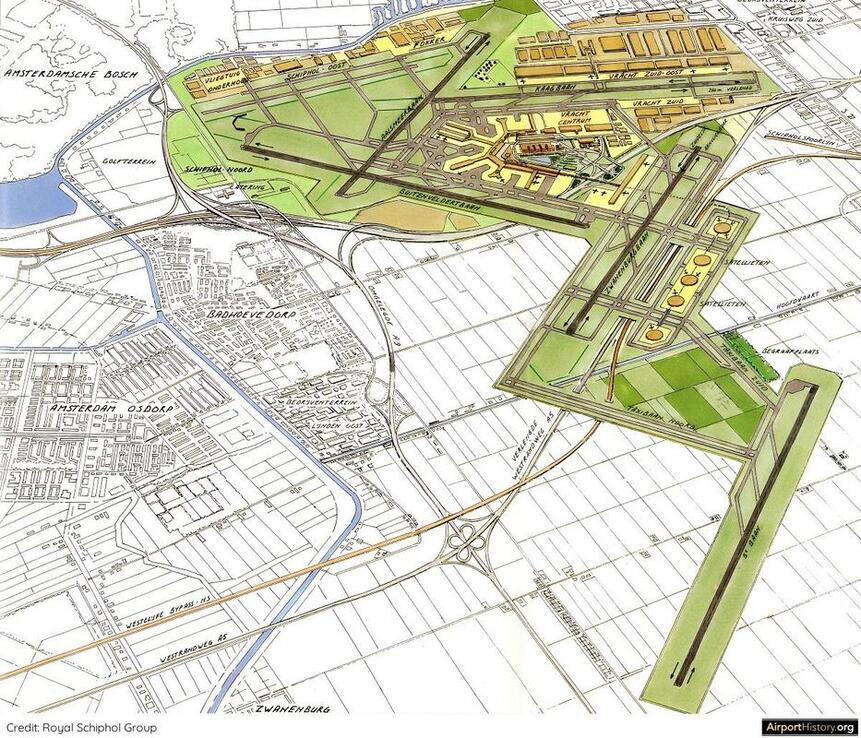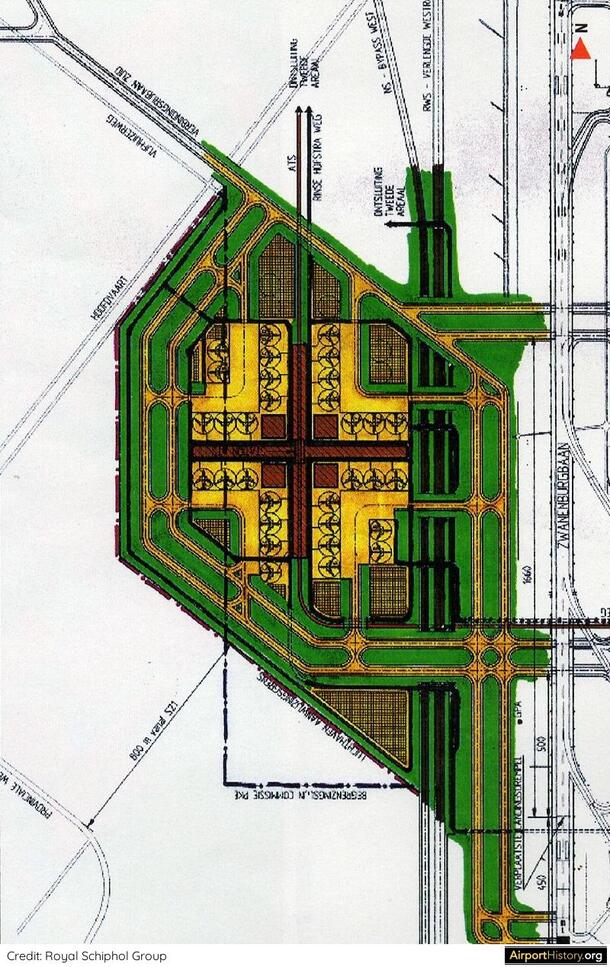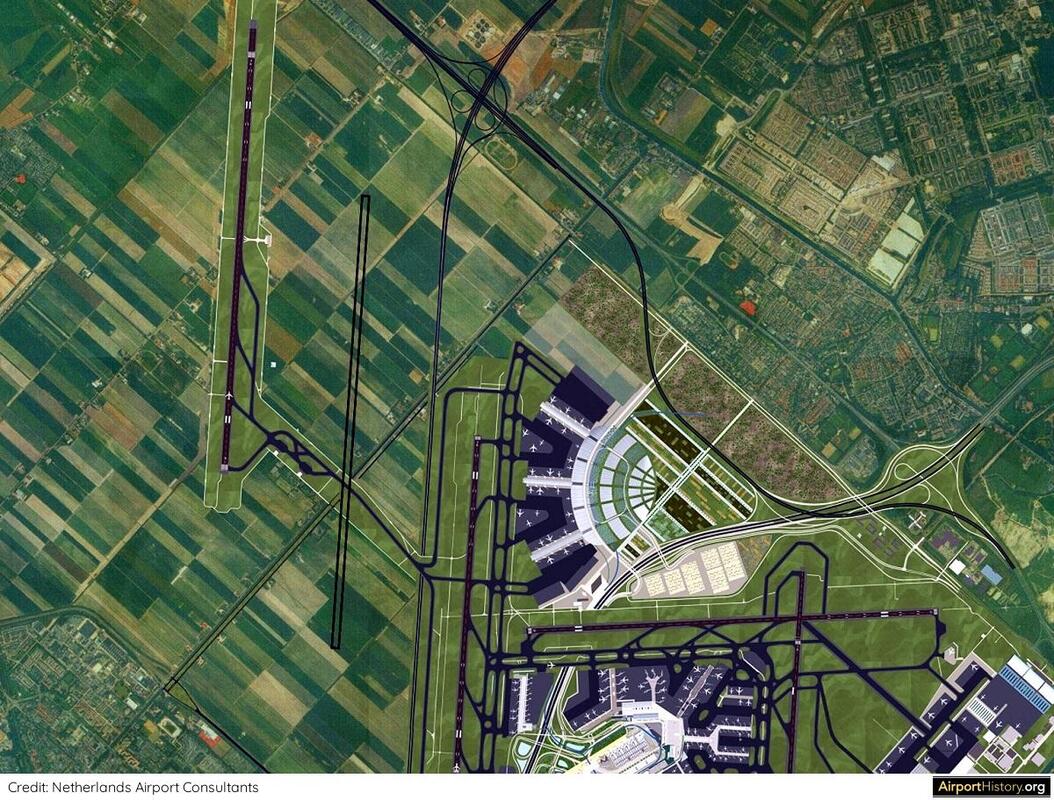|
Everyone who frequently flies in and out of Schiphol will be familiar with the infamous runway 18R/36L.
Opened in 2003, the runway is located a whopping 3 miles (4.5 km) from the terminal area and it can take 20 minutes or more to taxi from the runway to the gate! Some people refer to it as a planning blunder, but is it? In today's post, I will argue that the runway's remote location was actually well considered.
THE 'ENVIRONMENTAL RUNWAY'?
So, why was the runway so far away from the airport? In the early 1990s, when the project was going through the public consultation phase, the runway was pitched to the public as the "environmental runway". Supposedly, its location was optimized so that departure and arrival routes would avoid overflying built-up areas as much as possible, explaining its eccentric location. However, the runway first appeared in planning documents in 1967, when there was a lot less urban development around the airport and when jet noise was much less of an issue.
A SECOND TERMINAL COMPLEX?
The real reason was to secure land for future development, lots of land! By building the runway at its current location, a huge tract of empty farmland between the airport and the new runway effectively came under control of the airport, creating the possibility to develop new passenger handling facilities in the far future. Indeed, hidden deep inside the planning documents was a single sentence referring to the development of a "second terminal complex" in the space between the airport and the new remote runway. With that realized, the runway's location would suddenly be quite practical, wouldn't it?
Did you know?
Runway 18R/36L is named "Polderbaan" or "Polder Runway." The word "polder" refers to the typical Dutch phenomenon of dry- pumped lake beds, on which Schiphol is built.
Indeed, hidden deep inside the planning documents was a single sentence referring to the development of a "second terminal complex" in the space between the airport and the new remote runway. With that realized, the runway's location would suddenly be quite practical, wouldn't it?
No concept for this second terminal complex was ever developed. However, artist's impressions of the expanded Schiphol did show a number of satellite buildings, connected to the existing terminal by means of an automated people mover (APM).
Want more stunning airport photos & stories?
Sign up to our newsletter below to know when new content goes online.
CHANGE OF PLAN
Over the years the thinking about Schiphol's long-term evolution has changed. More recent plans envisage a second terminal building north of the current terminal complex, rather than northwest. This location would optimize connections to the existing terminal as well as existing road and rail connections. For the huge area in between runways 18R/36L and 18C/36C, planners have come up with the idea to construct yet another runway, which would provide Schiphol with four parallel north-south runways. This would still not preclude the development of satellite buildings at some point in the future.
AN UNCERTAIN FUTURE
Currently, Schiphol can still accommodate growth within the current runway system and terminal area. A new Pier A will open in 2023, raising the capacity with 14 million annual passengers to a total of 78 million annual passengers. An adjoining terminal will be built later on if and when demand bounces back. With almost 500,000 aircraft movements in 2019, growth at Schiphol has hit a political ceiling. Currently, a debate is ongoing on if and how to accommodate growth in the long term. The Dutch government as well as the general public traditionally have taken a pro-growth stance. However, with addressing climate change becoming an ever more urgent priority, the outcome of the discussion is currently uncertain. One thing is certain however; if the government does decide to allow further growth, plans are ready to accommodate it! What are your thoughts on Schiphol's Polderbaan and the airport's long-term development? Let us know in the comments below!
Want more stunning airport photos & stories?
Sign up to our newsletter below to know when new content goes online.
5 Comments
Brad
18/3/2020 15:24:03
Excellent article as usual....well done.
Reply
19/3/2020 08:18:49
Typically Dutch - look ahead, plan well, be flexible then get it done.
Reply
Ryan
5/4/2020 01:23:12
I believe the distance is also to allow simultaneous operations
Reply
Your comment will be posted after it is approved.
Leave a Reply. |
With a title inspired by the setting of the iconic 70s film "Airport", this blog is the ultimate destination for airport history fans.
Categories
All
About me
Marnix (Max) Groot Founder of AirportHistory.org. Max is an airport development expert and historian. |





 RSS Feed
RSS Feed